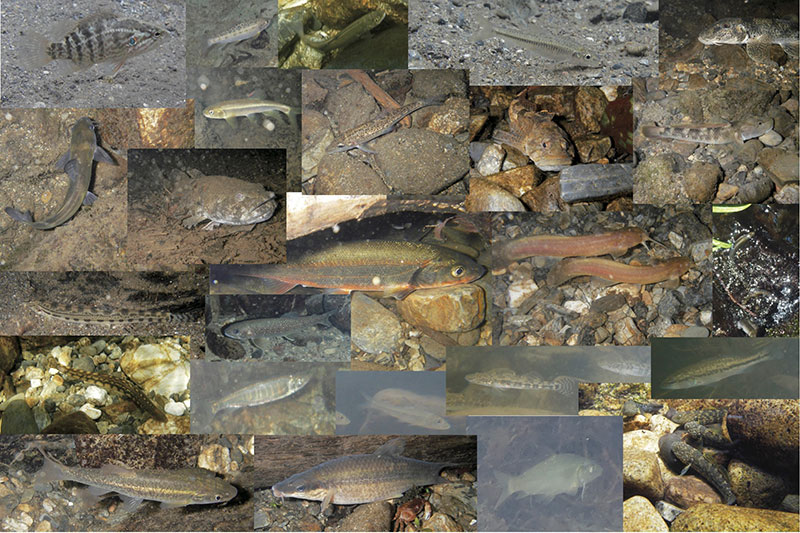Japan develops new ways of monitoring fish biodiversity and assemblage
Researchers from Kyoto University, Ryukyu University, Kobe University, and the Natural History Museum and Institute of Chiba have validated environmental DNA -- or eDNA -- metabarcoding as a new and more efficient way to monitor fish biodiversity.
The team's study took place in the surroundings of Japan's largest body of freshwater, Lake Biwa, which is known for the great diversity of its fresh water fish. Their findings were published in the journal Freshwater Biology .
"The traditional method of monitoring biodiversity is usually through observational field studies, which are expensive, time-consuming, and labor intensive," explains Hikaru Nakagawa, lead author of the study. "But with eDNA metabarcoding, we can gather a similar level of information in a shorter time frame, and with less resources."
eDNA refers to the genetic material found in water column samples from rivers or lakes, and includes DNA from the organisms in that environment. Metabarcoding uses this eDNA to identify the different species within that community. To assess the effectiveness of eDNA metabarcoding, the team compared their data with observational field studies in existing literature.
Using 102 water samples from 51 rivers, the researchers were able to identify a total of 38 fish species compared to 44 from observational studies. But while previous research took several years to collect, eDNA metabarcoding took only 10 days. Furthermore, eDNA metabarcoding was able to identify previously unrecorded species.
Satoshi Yamamoto, of Kyoto University's Department of Zoology, says that finding the DNA of two species of fish -- the three-spined stickleback, Gasterosteus aculeates , and the threelips, Opsariichthys uncirostris -- was in itself a surprise. " Gasterosteus aculeates is rare and endangered, and that is why they were likely missed in previous studies. On the other hand, Opsariichthys uncirostris only visits rivers during early to mid-summer for spawning, and previous data appears to reflect this seasonality."
While previous studies have applied eDNA metabarcoding in marine environments, this project is the first time for it to be utilized in rivers. Given the unidirectional flow of rivers, the researchers hypothesized that eDNA metabarcoding is more likely to detect fish upstream or in their immediate area, which could explain differences in the data from past literature.
"As we refine eDNA metabarcoding techniques, I expect this tool to become ubiquitous in studies involving biodiversity and conservation," says Nakagawa. "This technique has the potential to be applied at a wider scale at yearly, seasonal, or even finer time frames."

Some of the fish revealed through eDNA metabarcoding of the rivers feeding into lake Biwa (Kyoto University / Hikaru Nakagawa)
Paper information
【DOI】 https://doi.org/10.1111/fwb.13094
【KURENAI ACCESS URL】 http://hdl.handle.net/2433/230967
Hikaru Nakagawa, Satoshi Yamamoto, Yukuto Sato, Tetsuya Sado, Toshifumi Minamoto, Masaki Miya (2018). Comparing local- and regional-scale estimations of the diversity of stream fish using eDNA metabarcoding and conventional observation methods. Freshwater Biology, 63(6), 569-580.





